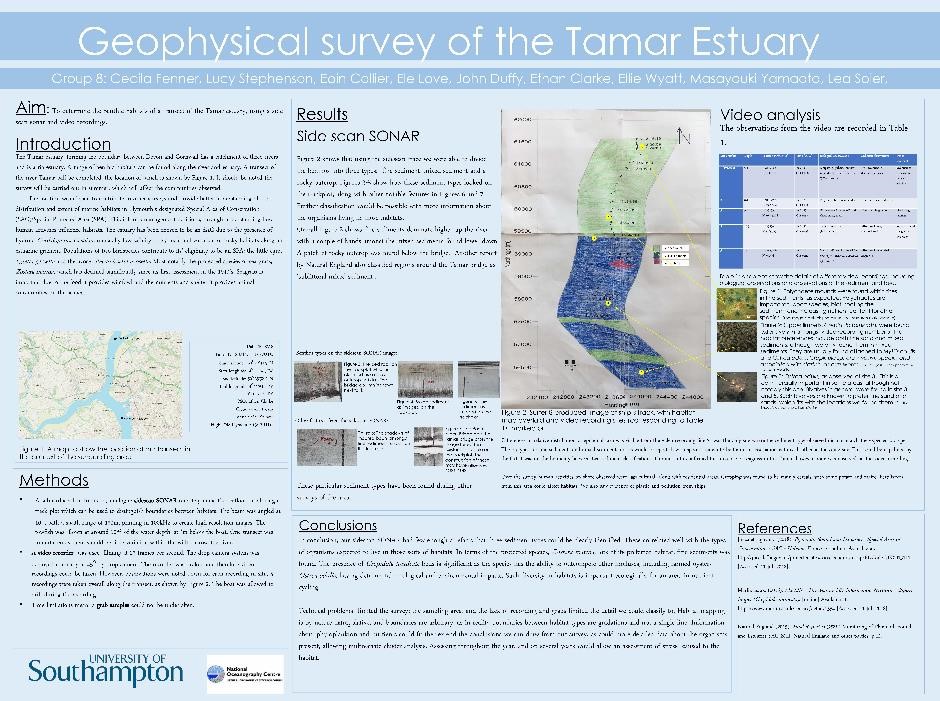![]()
The Tamar is home to a range of habitats including fine sediment, sub-littoral mixed sediment and rocky outcrops. It is classified as an SAC, SPA and SSI due to protected species occurring there, including the seagrass Zostera marina.
![]()
A side scan SONAR was used to map the seafloor and observations of video recorders were used to identify species present (and indicate biotypes).
![]()
- A sub surface dual frequency analogue sidescan SONAR remotely maps the seafloor, producing a track plot which can be used to distinguish boundaries between habitats. The beam was angled at 10, with a swath range of 150m, printing in 100kHz to create high resolution images. The tow-fish was flown at around 10% of the water depth, at 2m below the boat. One transect was undertaken as there should be little variation within the width across the river.
- A video recorder was used, filming at 25 frames per second. The drop camera system was deployed manually at 45 by drop camera. The recorder was broken and therefore video recordings could be taken. However, observations were noted down for each recording in situ. 5 recordings were taken overall along the transect, as shown by Figure 66. The boat was allowed to drift during the recording.
- Time limitations meant a grab samples could not be undertaken.
![]()
Our sidescan SONAR had few enough artefacts that three sediment types could be clearly identified. Our results showed differentiation in sediment types along the transect, going from mixed sediment lower down the river to fine sediment higher up, with a patch of rocky outcrop near the Tamar bridge. These correlated well with the types of organisms expected to live in those sorts of habitats observed on the video footage. Fine sediments had biotypes including polychaete mounds with some bivalves, whist mixed sediments had more diverse communities, including macroalgae, Ostrea edulis and beds of Crepidula fornicata. In terms of the protected species, Zostera marina, lots of its preferred habitat, fine sediments were found. Technical issues and time constraints limited the classification of biotypes as we could not record with the video or complete grabs. Therefore, no multivariate statistical cluster analysis could be completed.
Figure 66 shows the observations made using the video recordings.

Figure 66: table of results for habitat mapping
PLYMOUTH FIELD COURSE: THE INITIAL FINDINGS OF GROUP 8
